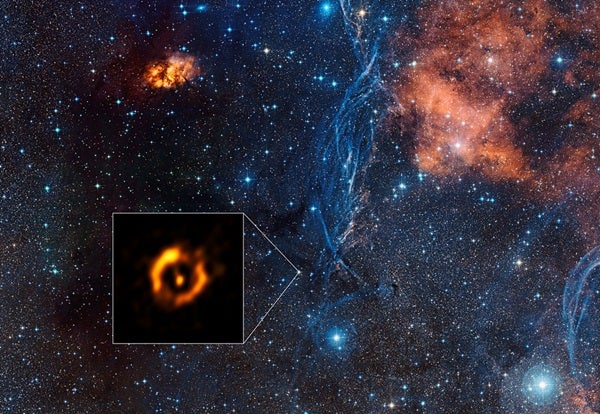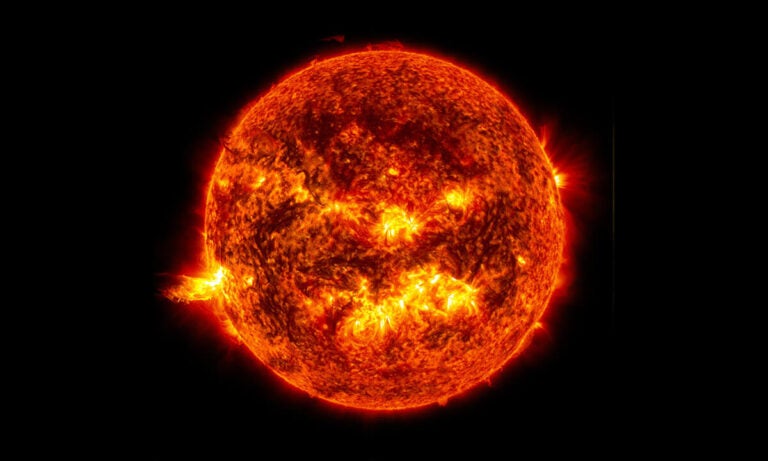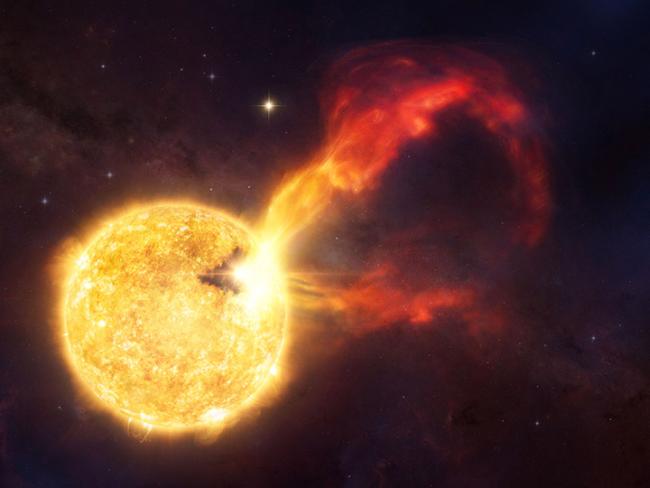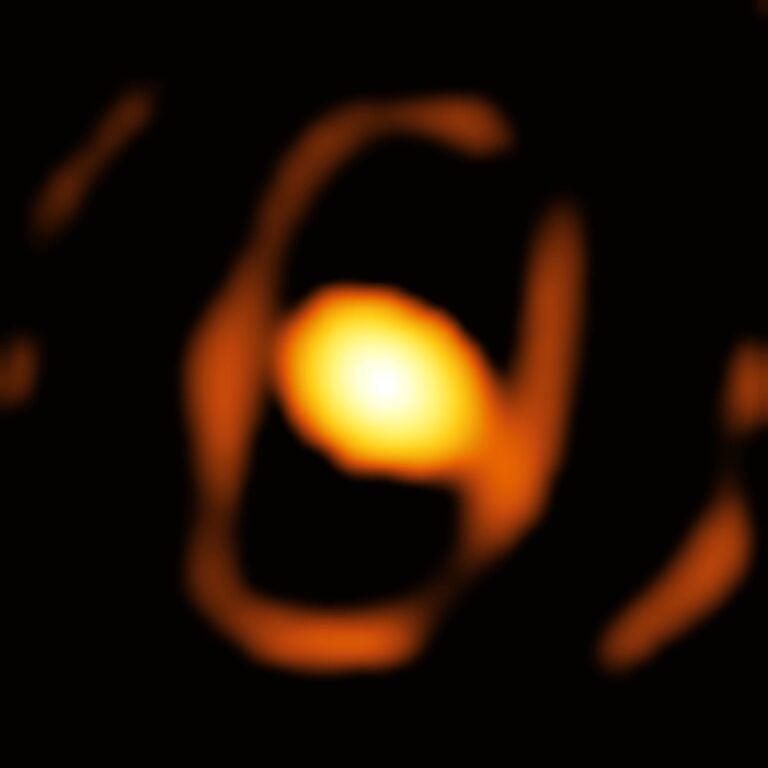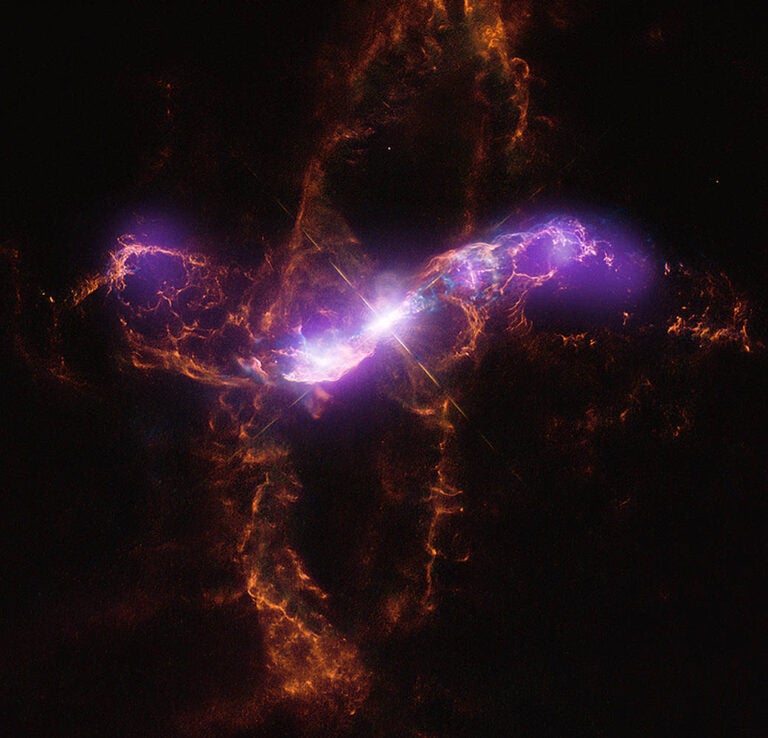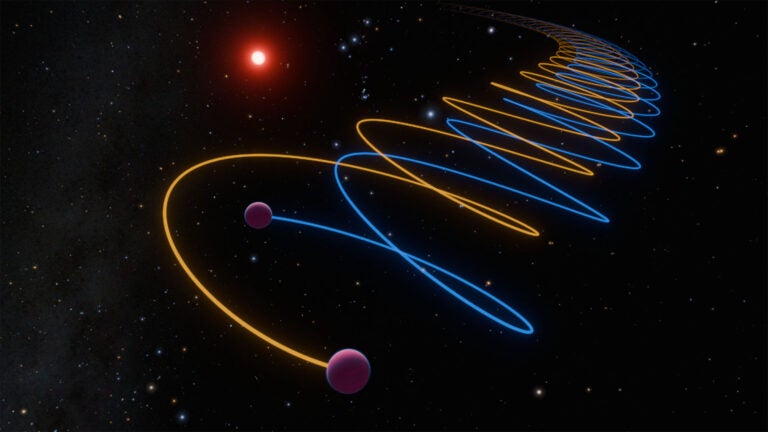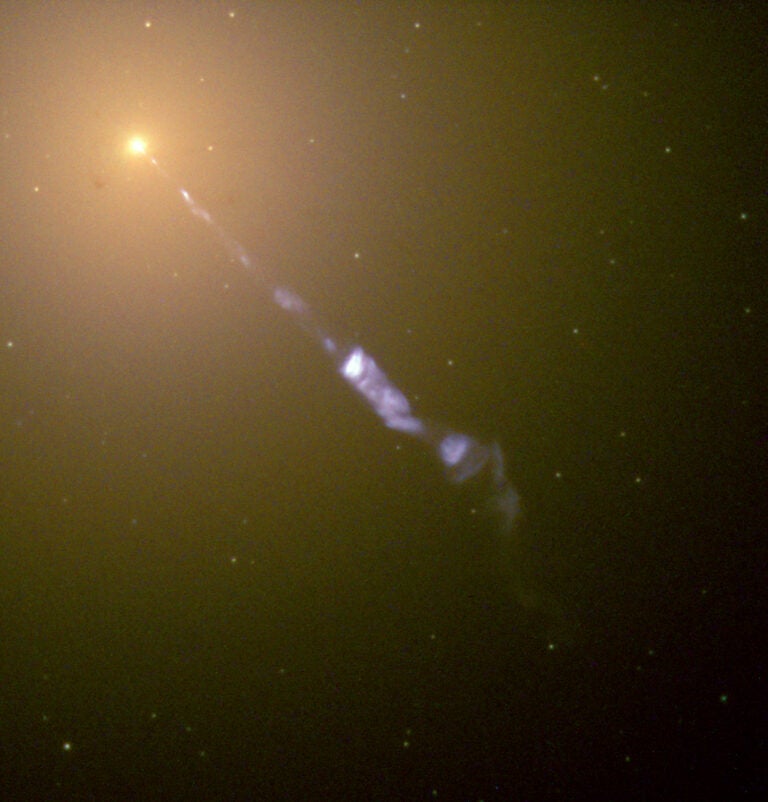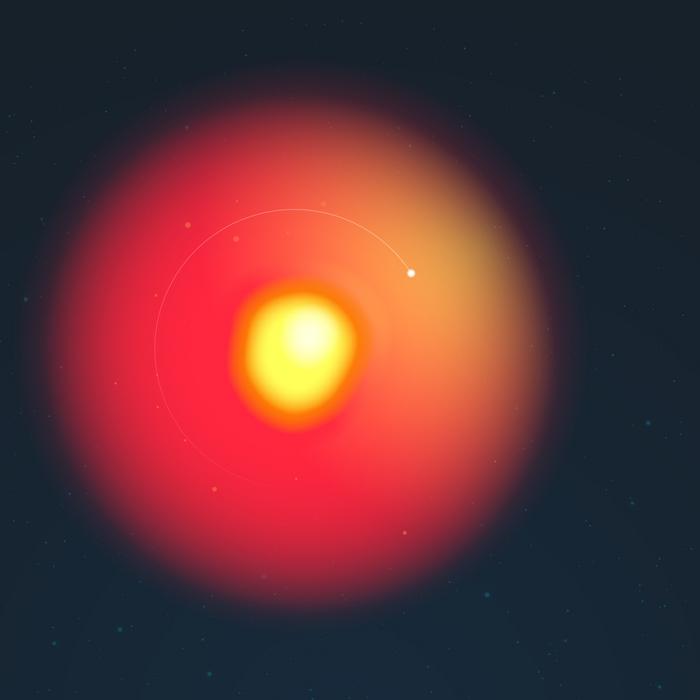The inset shows the VLTI reconstructed image, with the brighter central star removed. The background view shows the surroundings of this star in the constellation Vela the Sails.
As they approach the ends of their lives, many stars develop stable disks of gas and dust around them. This material was ejected by stellar winds while the star was passing through the red giant stage of its evolution. These disks resemble those that form planets around young stars. But up to now astronomers have not been able to compare the two types, formed at the beginning and the end of the stellar life cycle.
Although there are many disks associated with young stars that are sufficiently near to us to be studied in depth, there are no corresponding old stars with disks that are close enough for us to obtain detailed images.
But this has now changed. A team of astronomers led by Michel Hillen and Hans Van Winckel from the Instituut voor Sterrenkunde in Leuven, Belgium, has used the full power of the VLTI armed with the PIONIER instrument and the newly upgraded RAPID detector.
Their target was the old double star IRAS 08544-4431, lying about 4,000 light-years from Earth in the southern constellation Vela the Sails. This double star consists of a red giant star, which expelled the material in the surrounding dusty disk, and a less-evolved more normal star orbiting close to it.
Jacques Kluska, team member from Exeter University in the United Kingdom, said: “By combining light from several telescopes of the VLTI, we obtained an image of stunning sharpness — equivalent to what a telescope with a diameter of 150 meters would see. The resolution is so high that, for comparison, we could determine the size and shape of a one euro coin seen from a distance of 2,000 kilometers [1,200 miles].”
Thanks to the unprecedented sharpness of the images from the VLTI and a new imaging technique that can remove the central stars from the image to reveal what lies around them, the team could dissect all the building blocks of the IRAS 08544-4431 system for the first time.
The most prominent feature of the image is the clearly resolved ring. The inner edge of the dust ring, seen for the first time in these observations, corresponds well with the expected start of the dusty disk — closer to the stars, the dust would evaporate in the fierce radiation from the stars.
“We were also surprised to find a fainter glow that is probably coming from a small accretion disk around the companion star. We knew the star was double but weren’t expecting to see the companion directly. It is really thanks to the jump in performance now provided by the new detector in PIONIER that we are able to view the very inner regions of this distant system,” said Hillen.
The team finds that disks around old stars are indeed similar to the planet-forming ones around young stars. Whether a second crop of planets can really form around these old stars is yet to be determined, but it is an intriguing possibility.
“Our observations and modeling open a new window to study the physics of these disks as well as stellar evolution in double stars. For the first time, the complex interactions between close binary systems and their dusty environments can now be resolved in space and time,” said Van Winckel.

